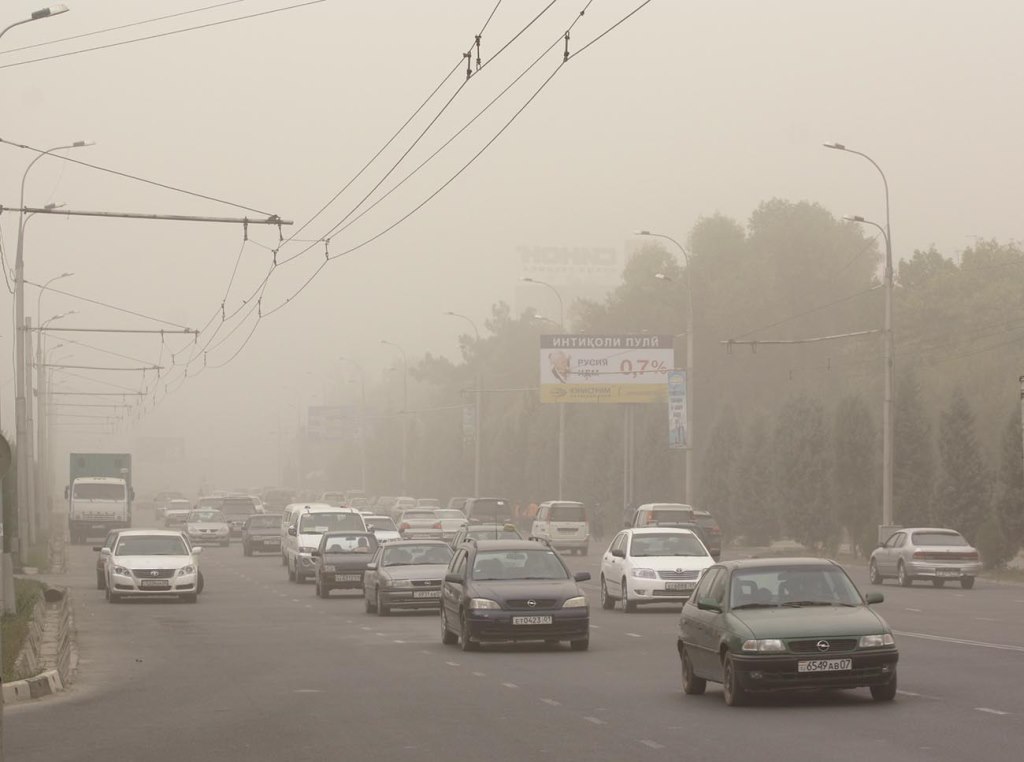In recent years, scientists and environmentalists have shown growing interest in studying the impact of dust aerosols on the lower atmosphere, particularly their effects on the environment, economic development, public health, and possible ways to adapt to these changing conditions.
While we cannot prevent the spread of dust storms, it’s essential to find and implement methods to adapt to and mitigate their impact, notes Muazama Burhonova, an expert from CABAR.asia, in her article.
Climate change has significantly influenced the frequency and intensity of dust and sand storms (DSS), which are interconnected with various factors like droughts, extreme temperatures, changing precipitation patterns, land degradation, and shifts in wind patterns.
The first reports of DSS in Tajikistan were published in 2007 by scientists from the Physical-Technical Institute of the National Academy of Sciences of Tajikistan. According to their Atmospheric Physics Laboratory, southern and central Tajikistan fall within a global dust belt, where dust from the Aralkum, Kyzylkum, Karakum, Gobi, Taklamakan deserts, as well as Iran’s Dasht-e Lut and Dasht-e Kavir deserts, is carried across the country’s southern borders. These regions, including mountain valleys and urban centers, are often shrouded in dust clouds and suffer from the resulting adverse effects.
Over the past 30 years, the number of dust events in Tajikistan has increased by at least tenfold. While they occurred only two to three times annually in the early 1990s, recent years have seen up to 35–45 dust events per year. Prolonged exposure to dust compounds its adverse effects, as particles can remain suspended in the air for days or even months, although storms themselves may last only minutes.
Impact of dust storms on public health
Air pollution poses severe health risks and economic losses in Tajikistan. According to World Bank research, PM2.5 pollution contributes to a mortality rate of 78 deaths per 100,000 people, the second highest in Central Asia. Air pollution in Tajikistan causes approximately 4,800 deaths annually, predominantly from ischemic heart disease (51%) and stroke (27%). Ozone, another major air pollutant, is associated with an additional 60 to 230 deaths. Health-related costs linked to air pollution are estimated to amount to 4% of Tajikistan’s GDP. Other impacts include crop yield losses (due to ozone) and accelerated glacial melting (due to black carbon).
Impact of dust storms on air quality
According to the Physical-Technical Institute of the National Academy of Sciences of Tajikistan, aerosols in the air during intense dust invasions from the south and west contain various heavy metals such as hexavalent chromium (Cr), arsenic (As), cadmium (Cd), and nickel (Ni), classified as high-risk carcinogens. Unlike organic pollutants, heavy metals do not degrade but instead cycle through different forms, integrating into salts, oxides, and organometallic compounds. These metals accumulate in plants and animals, entering the human food chain.
Impact of dust storms on agriculture
Dust and sand storms (DSS) harm crops and the fertile topsoil, removing the upper soil layer rich in nutrients essential for plant growth, which reduces soil fertility and may lead to lower crop yields. Strong winds and airborne sand physically damage plants, limiting their ability to absorb sunlight. Dust and sand carried by storms can settle in water sources, causing silting and reducing water quality for irrigation and drinking. Dust storms also alter the microclimate, reducing sunlight for photosynthesis and affecting temperature and humidity levels. Damaged crops become more susceptible to diseases and pests, further exacerbating yield losses.
What can be done to minimize the impact of dust storms?
While dust storms are inevitable, implementing adaptation methods to reduce their impact is essential. One such measure in Tajikistan is reforestation. The forestry sector plays an important role in the country’s economy, providing ecological benefits like increased biodiversity, improved air and water quality, and reduced soil erosion, as well as economic benefits such as better public health, ecotourism development, and job creation.
Reviving green spaces is a high priority in Tajikistan, with numerous government initiatives supporting this effort. One such initiative is the Forestry Sector Development Strategy 2016–2030, developed by the Committee for Environmental Protection under the Government of Tajikistan. Currently, an action plan for the Strategy’s third phase is being drafted, taking into account the new critical factor of dust and sand storms.







